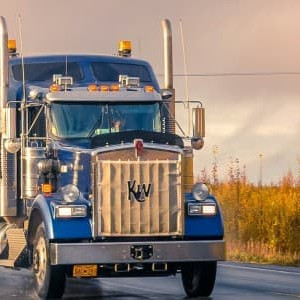Is Freight Decarbonisation Viable?


One of the most difficult sectors to decarbonise is freight, and yet it's one of the industries we most rely on in the modern world. While several countries are making leaps and bounds in terms of renewable energy production, little progress has been seen in decarbonising hard-to-abate sectors, despite the introduction of several national policies and international targets. So, just how hard will it be to decarbonise freight in the coming decades as many countries strive to achieve net-zero carbon emissions?
Freight transportation contributes around 8 percent of global greenhouse gas emissions[1], and as much as 11 percent if warehouses and ports are included. Asia, Africa, and Latin America are expected to triple the global demand for freight by the mid-century, which could double the sector's greenhouse gas emissions. While other sectors strive to reduce fossil fuel use, freight is expected to continue to rely heavily on oil and gas, which could make it the highest emitting sector by 2050 if no action is taken to decarbonise the industry.
In 2018, the OECD's International Transport Forum (IRF) published a report[2] entitled Decarbonising Maritime Transport - Pathways to zero-carbon shipping by 2035. The report examined what was required to decarbonise international shipping by 2035. It found that "Maximum deployment of currently known technologies [at the time] could make it possible to reach almost complete decarbonisation of maritime shipping by 2035.
The four potential decarbonisation pathways for shipping identified in this report would result in a CO2 emission reduction between 82 percent and 95 percent of the currently projected 2035 level." The ITF suggested that alternative fuels, such as advanced biofuels and renewable energy, could deliver much of the required reductions. Modern engines and more efficient practices, such as using vehicle space more efficiently or reducing freight demand, could also contribute to an emissions reduction.
However, to achieve the desired outcome, the ITF recommended setting a clear, ambitious emissions-reduction target to drive the decarbonisation of maritime transport, supporting the realisation of emissions-reduction targets with a comprehensive set of policy measures and providing smart financial incentives to advance the decarbonisation of maritime shipping. Since 2018, several countries have begun to invest heavily in the rollout of higher levels of renewable energy capacity, the production of advanced biofuels, and the development of alternative fuels such as green hydrogen. However, the current global capacity of these energies and fuels remains far too little to have a meaningful impact on the freight industry.
The high emissions from the freight sector largely come from road transport, particularly in Europe. According to Eurostat[3], in 2022, road freight accounted for 77.8 percent of total freight traffic in the EU. Road freight, especially heavy-duty vehicles (HDVs), contributes heavily to transport emissions due to its ongoing reliance on fossil fuels.
Several European countries have worked to promote the shift from road to rail freight, however, the high costs involved with this shift have deterred several countries from making the jump. One of the most attractive decarbonisation methods is switching the power source of road freight. Companies have explored the use of battery-electric and hydrogen-powered trucks, as well as alternative fuels, but little progress has been seen in rolling out these technologies on a large scale, with 97% of heavy goods vehicles registered in the EU in 2023 still running on diesel.
As of a 2025 analysis[4], electrification appears the most viable option for reducing carbon emissions from road freight, largely thanks to the falling cost of batteries and the rollout of high-power recharging infrastructures. In addition, recent innovation in battery-electric trucks (BET) is showing great promise. It is not only in Europe where electrified road freight is taking off.
In India, NITI Aayog launched the Electric Freight Accelerator for Sustainable Transport[5], a platform aimed at enhancing collaboration between the government and private sector for large-scale freight electrification. The initiative has led to 16 major manufacturing and logistics companies collectively signalling demand for 7,750 electric freight vehicles by 2030[6]. Meeting this demand will require the development of new national policies and regulations, infrastructure development, and blended financing platforms to attract private investments. Meanwhile, in the U.S., the Department of Energy (DoE) announced[7] a £68 million investment to design, develop, and demonstrate innovative electric vehicle (EV) charging sites near key ports, distribution hubs, and major corridors in January.
The programme falls under the DoE's SuperTruck Charge initiative, which launched in 2009 and aims to provide large-scale public EV charging infrastructure for medium- and heavy-duty EVs. Governments and logistics companies worldwide are increasingly seeing the need for a low-carbon freight network. However, while significant funding has been contributed to research and development, establishing these networks is highly complex and requires international cooperation, as well as high levels of financing for innovative low-carbon solutions.
Further, the focus on developing the renewable energy capacity required for domestic power alone has detracted from a focus on decarbonising hard-to-abate industries, such as freight.
By Felicity Bradstock for Oilprice.com
More Top Reads From Oilprice.com
References
- ^ 8 percent of global greenhouse gas emissions (climate.mit.edu)
- ^ report (www.oecd.org)
- ^ Eurostat (ec.europa.eu)
- ^ analysis (www.cae-eco.fr)
- ^ Electric Freight Accelerator for Sustainable Transport (efastindia.org)
- ^ signalling demand for 7,750 electric freight vehicles by 2030 (www.iea.org)
- ^ announced (www.energy.gov)